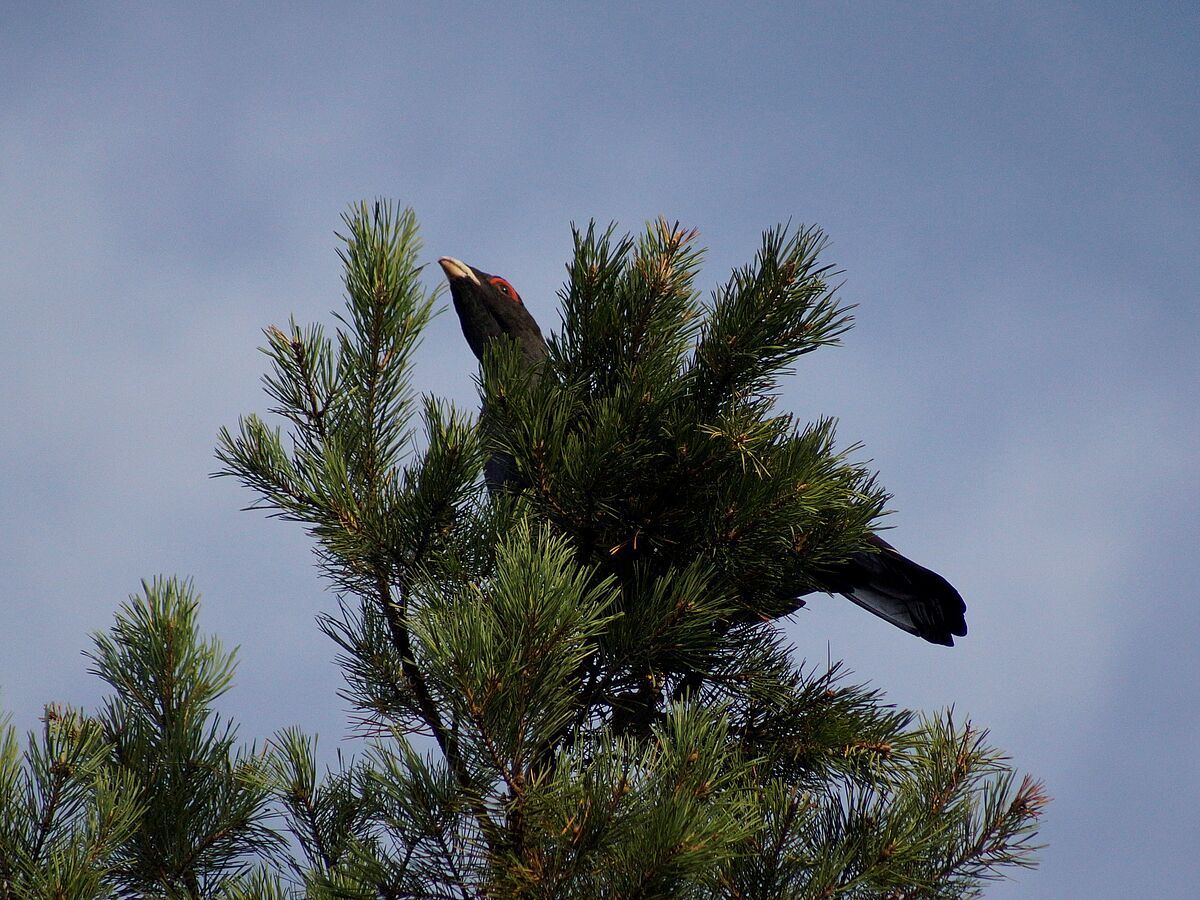Bad Liebenwerda, Germany - Using molecular genetic tools, scientists have demonstrated the existence of a grandchildren’s generation of capercaillies in the south of Brandenburg in East Germany. A pilot conservation project reintroduced these endangered birds to the German nature reserves “Niederlausitzer Heidelandschaft” and “Niederlausitzer Landrücken” as recently as 2012. The founder population was wild caught in Sweden and then transferred to Brandenburg.
“I am really happy about this success which exceeds the highest expectations even of the project initiators. This success is based on a longstanding collaboration between the Forest Administration of our state, the two nature reserves, the Federal Forest Management Lausitz, the Leibniz Institute of Zoo and Wildlife Research (IZW) and local private forest owners. The aim of this collaboration over the long-term is to significantly improve the habitat in the large forests of the Western Niederlausitz”, says Jörg Vogelsänger, Brandenburg’s Minister of Rural Development, Environment and Agriculture.
Experts discovered the unexpected existence of a grandchildren’s generation when examining feathers collected from sand baths of the capercaillies. Geneticists from the IZW in Berlin not only documented the 60 Swedish capercaillies introduced into Brandenburg during the original release in 2012 and 2013. They could also show that the population already contained descendants of the first and second generations. Therefore these young animals are the very first real “Brandenburg” carpercaillies. The original, native Brandenburg population had died out in 1990. Increased sightings of carpercaillies beyond the boundaries of the pilot conservation project area confirm that these impressive birds are established well and start spreading within Brandenburg.
The carpercaillie pilot project ran from 2012 to 2014. It evaluated the chances of success for reintroducing carpercaillies in its former habitat in the Niederlausitz and was scientifically monitored. The high survival rates of the Swedish wild caught birds is substantially above those from other comparable projects which used animals bred and kept in aviaries or cages. Despite this first evidence of successful reproduction of carpercaillies in Germany, the question is whether the current number of animals is sufficient to establish a viable population in the long run. The current population of 30 to 40 animals and their descendants does send out an optimistic message to all involved experts and the local communities which assisted in the reintroduction. This founder population represents a first big step towards a successful reintroduction of a highly endangered bird species in Germany. For the experts, the establishment of a self-sustaining population of at least 100 animals is the medium-term goal. For that reason, the Swedish Ministry of Environment will provide more carpercaillies to Germanys’ state of Brandenburg in the next few years.
Kontakt:
Ministerium für Ländliche Entwicklung, Umwelt und Landwirtschaft Landesamt für Umwelt Naturpark Niederlausitzer Heidelandschaft Leibniz-Institut für Zoo- und Wildtierforschung (IZW) im Forschungsverbund Berlin e.V. Leiter Stabsstelle Presse & Kommunikation Telefon: 030/ 51 68 125 Mobil: 0177/ 857 26 73 Internet:www.leibniz-izw.de seetizw-berlin.de |


